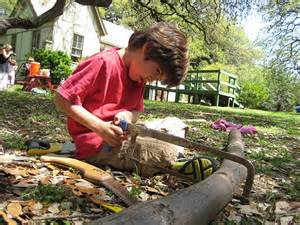Micah Watson, B.S.
Close your eyes and think back to when you learned your greatest lessons in Life. Was it from books or in a classroom, or was it while you were doing something? Was it easy or difficult? Was it from a perfect score or from many mistakes? Was it told to you or was it sparked by curiosity?
When I think of school I think of obscure facts of small significance and taking tests. I remember myself at a desk with my head stuck in a textbook reading then answering questions at the end of the chapter. This did spark my brain to work but not in the way my teacher intended. I looked for shortcuts; learning that the bolded words were most likely the answers and the questions followed the sequence of the chapter. So instead of reading, my eyes were scanning and copying words that carry no meaning besides bringing me closer to having “free time” to do what I wish.
Things are changing. There is a greater focus on learning how to learn. With the great advances in technology the problem isn’t finding information anymore but sparking curiosity and the desire to “disrupt” traditional methods. We are learning that more skills are needed in life than just what can be found working in a classroom.
Experiential Education is not a novel idea, with Montessori creating a method, but EE is now catching fire in mainstream learning environments. This idea redefines the roles of teachers and students. It provides direct experiences and hands-on learning environments to teach content. Direct experience leads to immediate feedback. It is more intense and increases knowledge and skills. Schools and programs that focus on Experiential Education encourage experimentation and allow children to make mistakes. From reflection upon these mistakes they learn wonderful lessons.
Gever Tulley is a self-taught software engineer who discovered a passion for learning. He started with designing a summer camp for children in 2005 called “Tinkering School”, where children have the opportunity to work together to dream up and create large projects such as a working rollercoaster, a rope bridge made out of plastic grocery bags, and a three-story tree house. Gever, in a TED talk given in 2007 describes “5 dangerous things you should let your kids do”. Some of which are to play with sticks, have a pocket knife, and under controlled circumstances drive a car. He advocated that these experiences help to increase knowledge and brain development.
Diana Laufenberg, loves to see students make mistakes because she knows it is a powerful method of learning. Diana has taught students 7-12 grades in social studies and is known for designing projects where students are inspired, take charge, and work together. Instead of teaching from a textbook about American Government she designed a project around a local election where students made pamphlets, were out in the community interviewing secretaries, and organizing a large community meeting at the school centered on important issues in the community. She said concerning the meeting that her students really took charge and were prepared. She reports that all she did was “sit back and watch it unfold.”
Finally, Experiential Education is a method to get students involved in the community and thinking about their vocation, and to develop Executive Functioning skills. Internships, Apprenticeships, and Mentoring are ideas that add substantial value to both the student and the business. Businesses and organizations where students are learning and sharing ideas are often at the cutting edge, by giving to the future, they are also inviting the curiosity and ideas of the next generation. Skills learned in project style course translate more directly into a working environment, and better prepare students for real life.








